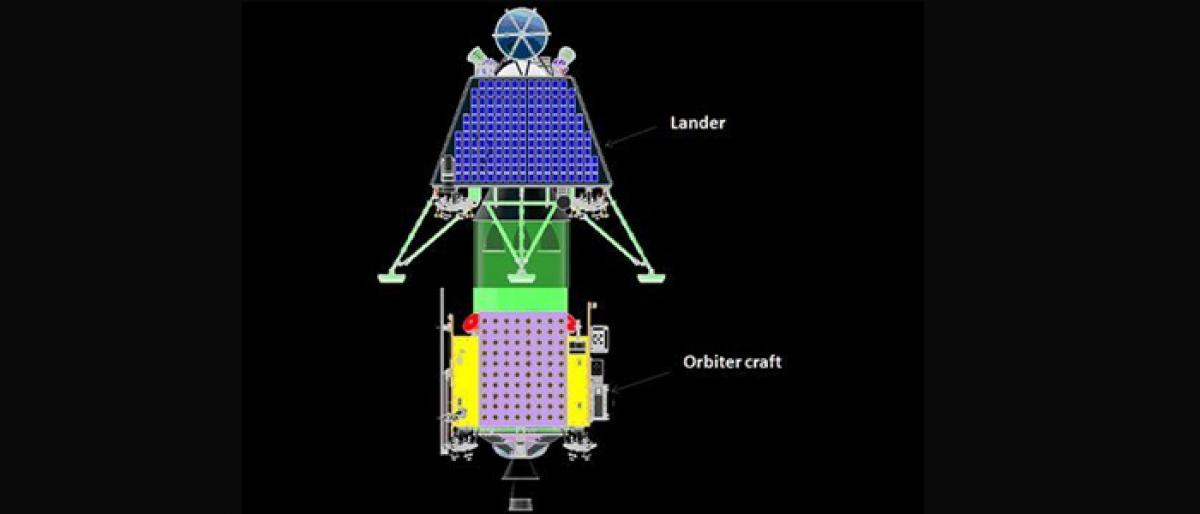Live
- Heavy rains expected in AP due to strengthening low Pressure Area
- Officials told to work in coordination for smooth conduct of Group-2 exams
- Alliance, YSRCP corporators argue over expensive projects
- New CMR mall opens in Kurnool
- Former Speaker Tammineni’s clout on the wane
- Attack on media: Take action against Mohan Babu, demand journalists
- More sports equipment promised at Central Park
- Mohan Babu’s attack on journalists inhumane act
- West Quay-6 of VPA to get revamped
- Rajaiah demands govt to introduce SC categorisation Bill in Assembly
Just In

The Indian Space Research Organisation (Isro) has started flight integration activity for its next lunar mission Chandrayaan-2 and scientists are currently carrying out tests for the lander and the rover that will explore the moon.
Hyderabad: The Indian Space Research Organisation (Isro) has started flight integration activity for its next lunar mission Chandrayaan-2 and scientists are currently carrying out tests for the lander and the rover that will explore the moon.
Officials said the spacecraft launch, on board GSLV-Mk II, is planned for March 2018 and many new technologies have been developed indigenously to achieve the mission requirements. Chandrayaan-2, India’s second mission to the moon, is an advanced version of the previous Chandrayaan-1 mission nine years ago. This spacecraft is a composite model consisting of orbiter, lander and rover.
According to Isro, unlike Chandrayaan-1, wherein an impact probe crash-landed on the surface of the moon, Chandrayaan-2 will soft land its lander with the rover on the lunar surface to conduct the next level of scientific studies. “Things are going on. The orbiter is getting ready.
Flight integration activity is going on, and a series of tests are planned for lander and rover. They are all in progress and we are working towards the first quarter (of 2018) launch of Chandrayaan-2,” Isro chairman AS Kiran Kumar said.
Officials said rover flight systems test include “soil mixing exercise” and mobility test to evaluate the rover’s wheel-soil interaction.
According to them, the lander configuration has been finalised to meet soft and safe landing at the identified site, as also payload configuration and interfaces with the lander.
Isro had also established a lunar terrain test facility for conducting lander leg drop tests. “It is a totally Indian mission; no other collaboration,” Kumar said. “It (Chandrayaan-2) differs from the previous one (Chandrayaan-1) in the sense that in the last one, we had moon impact probe that descended on the moon in an uncontrolled manner, whereas this (Chandrayaan-2) will carry a lander, which will descend on the surface of the moon in a controlled manner,” he said.
After the lander lands on the moon, the rover will come out and it will do some in-situ observations and we will be able to get these observations through radio contact, Kiran Kumar said.

© 2024 Hyderabad Media House Limited/The Hans India. All rights reserved. Powered by hocalwire.com







